Australian Red Cross
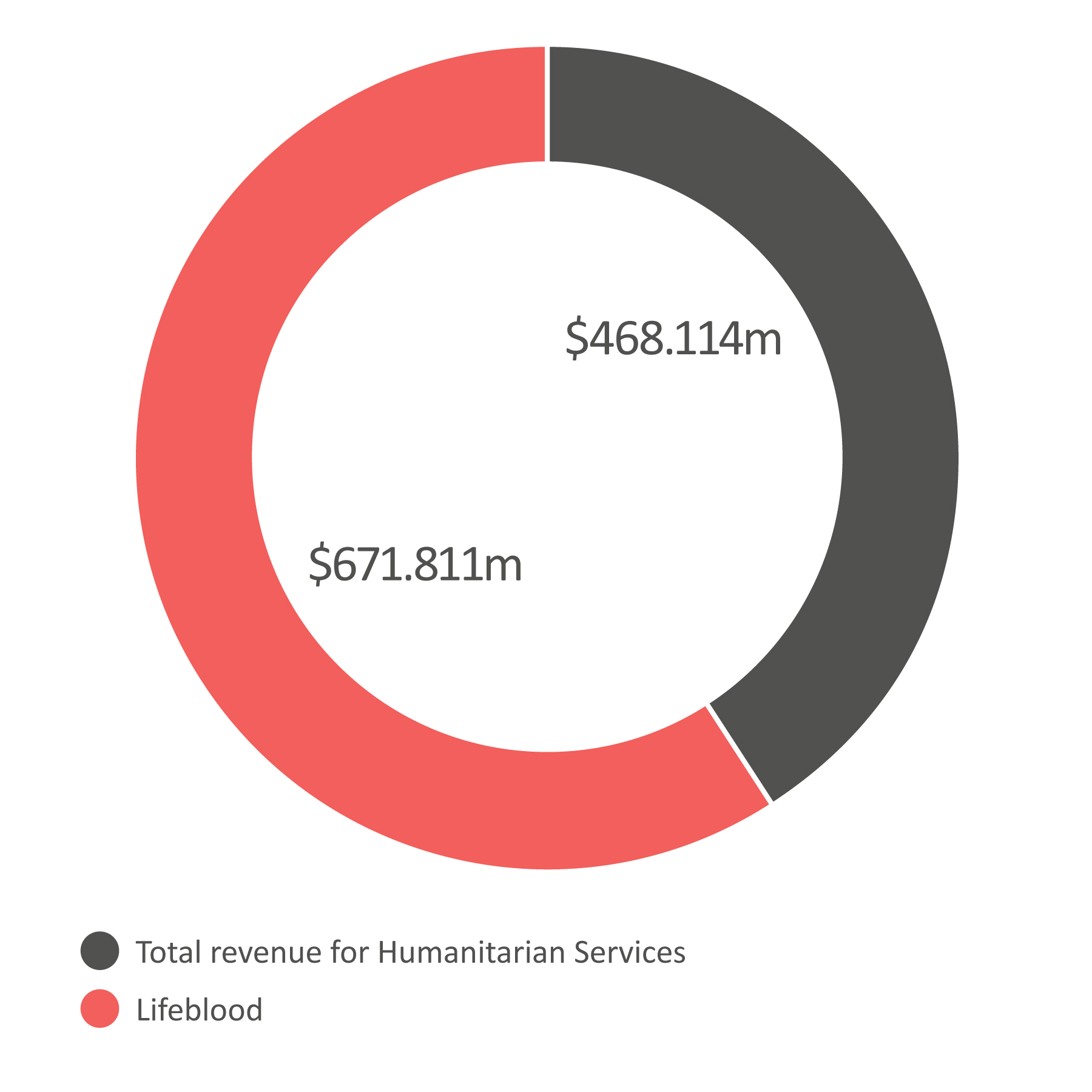
Humanitarian services
Total $468.114m
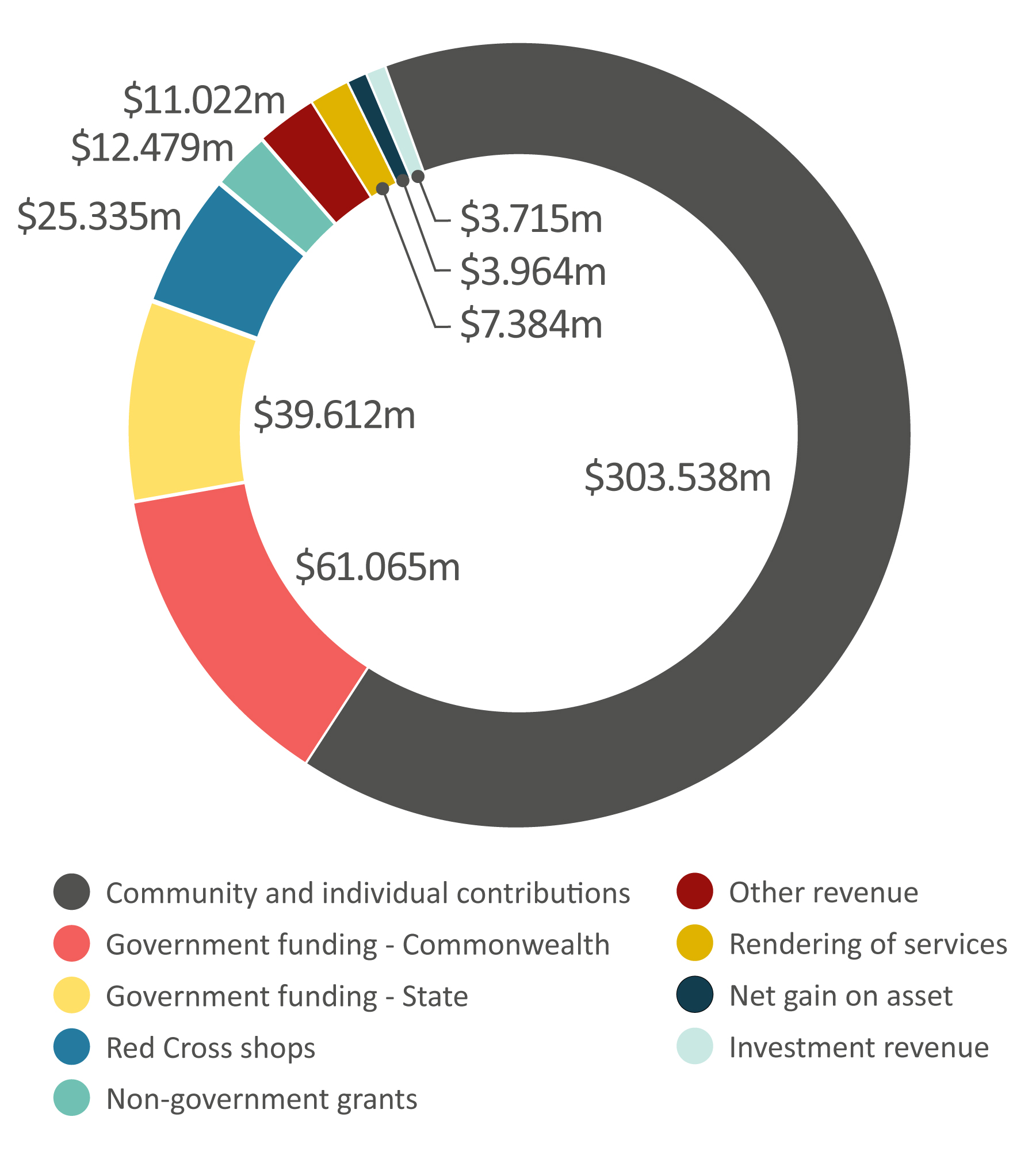
Gross revenue for the entire Australian Red Cross Society was $1,139.925M. This figure includes $671.811M for Lifeblood – the blood products and human tissue services division of the Australian Red Cross Society. Lifeblood’s portion of the gross revenue includes $653.536M in government funding, $6.144M in investment income and $12.131M from other income sources. Revenue for Humanitarian Services was $468.114M, a $243.640M increase from the previous year. There was an increase of $15.937M in government funding which was mainly due to providing additional COVID-19 support to members of the community and increase in Humanitarian Settlement Program activity. Our donor funds help us to continue essential support for our most vulnerable migrants, refugees and asylum seekers. Our revenue from our Red Cross shops decreased by $6.063M to $25.335M due to the closure of shops due to COVID-19. Revenue from Non-Government Grants increased by $6.210M to $12.479M.
Overall, 70.3% of the funding for our Humanitarian Services came from the Australian and International community and goods purchased by them.
The Australian and international public donated more than $316.681M this year ($88.086M for our everyday work and $227.595M for emergency appeals). During summer we saw unprecedented bushfires and incredible generosity in response from local and international communities. The Disaster Relief and Recovery fund was opened on 1 July 2019 and by 30 June 2020, it had reached $227.277M. The Society is using these funds to help people affected by these fires to meet their immediate needs through emergency grants, together with longer-term recovery support for people and communities. As at 30 June 2020 $166.616M had been expensed. The unspent funds of $60.661M are quarantined for emergency and needs based grants, together with longer-term recovery support for people and communities affected by the 2019/2020 fires.
This year we recorded $25.335M from the people buying at our Red Cross shops, with retail revenue declining by 19.3% in FY2020 largely due to warehouse and store closures impacted by COVID-19 health and safety requirements.
This revenue is supplemented by substantial non-financial support, with Red Cross volunteers and members providing millions of hours through the year. There are also gifts in-kind and pro bono services. While we do not place a dollar value on these priceless forms of support, without them our everyday work would not be possible.
Government funding, which includes Commonwealth government and State government funding remains a significant source of income. Commonwealth government funding was $61.065M and State government funding was $39.612M, which represents 13.0% and 8.5% of income respectively (FY2019: 21.4%, 16.4%).
We assess all funding opportunities through internal review processes to ensure services we fund are aligned with community needs and our strategic direction. Risk assessments are conducted and business continuity plans developed to ensure our services remain viable and effective. We also measure program outcomes and deliverables against our annual plan and strategic priorities.
Community support for our humanitarian services
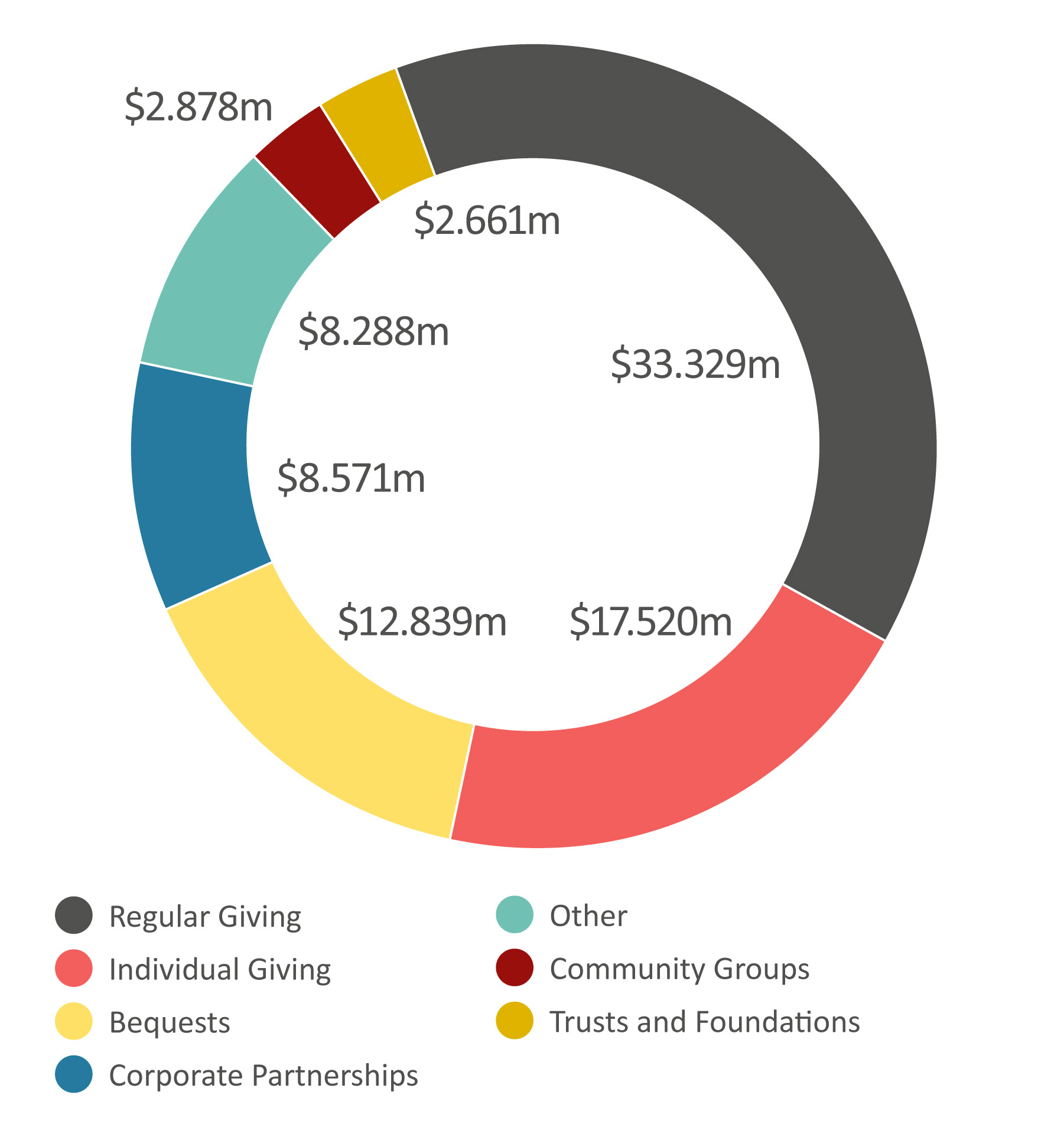
Financial support provided by individuals and the community for our everyday work and services totaled $86.086M, excluding donations to our specific disaster, relief and recovery fund further detailed below, reflecting the generosity of the Australian public.
The largest source of community support for our everyday work continues to be regular, ongoing monthly contributions. These regular givers donated $33.329M, a decline from the previous year ($36.852M). The overall proportion of our everyday work funded by regular giving decreased to 38.7% from 44.3% last year (note that this does not include disaster appeals).
Another key group of supporters are people who thoughtfully leave a gift to Red Cross in their Will. Bequests contributed 14.9% of our income, providing $12.839M, a decrease of $2.317M on the previous year. Almost two in every three dollars given by the community came from regular givers and bequests, highlighting the huge positive impact made by ordinary Australians.
We also received income from valued corporate partners, trusts and foundations, individuals making one-off donations, Red Cross members and community groups.
Disaster Relief and Recovery Fund
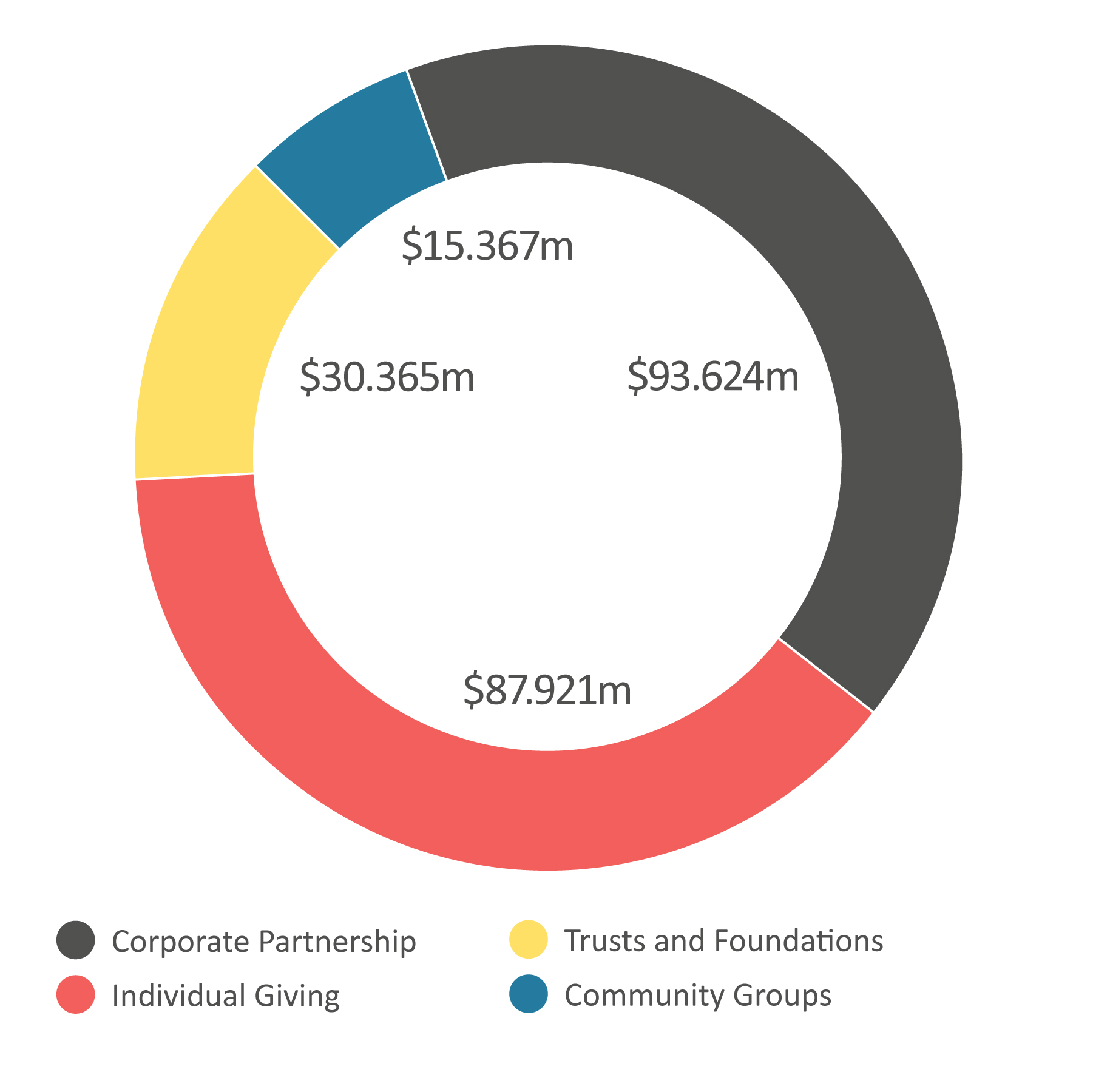
The Disaster Relief and Recovery (DRR) Fund was set up to help the Australian Red Cross Society (Society) give people the support they need in disasters, whenever and wherever they happen. Donations received means Red Cross can be there as soon as an emergency strikes in Australia and further afield. With community support, Red Cross can help communities to prepare, respond and recover from disasters. During summer we saw unprecedented bushfires and incredible generosity in response from local and international communities. The DRR Bushfire fund has been open since 1 July 2019 and by 30 June 2020, it had reached just over $227.277M, of which $32.400M was given by international donors. The Society is using funds to help people meet their immediate needs through emergency grants, together with longer-term recovery support for people and communities. The DRR Fund allows the Society to support bushfire-affected communities now and into the future.
Our Corporate partners also contributed generously with $93.624M going towards the Disaster Relief and Recovery Fund. Individual Giving with $87.921M was one of the biggest contributors for Disaster Relief and Recovery Fund. This was followed by Trust and foundation with $30.365M and $15.367M from Community Groups.
Government funding for our humanitarian services work
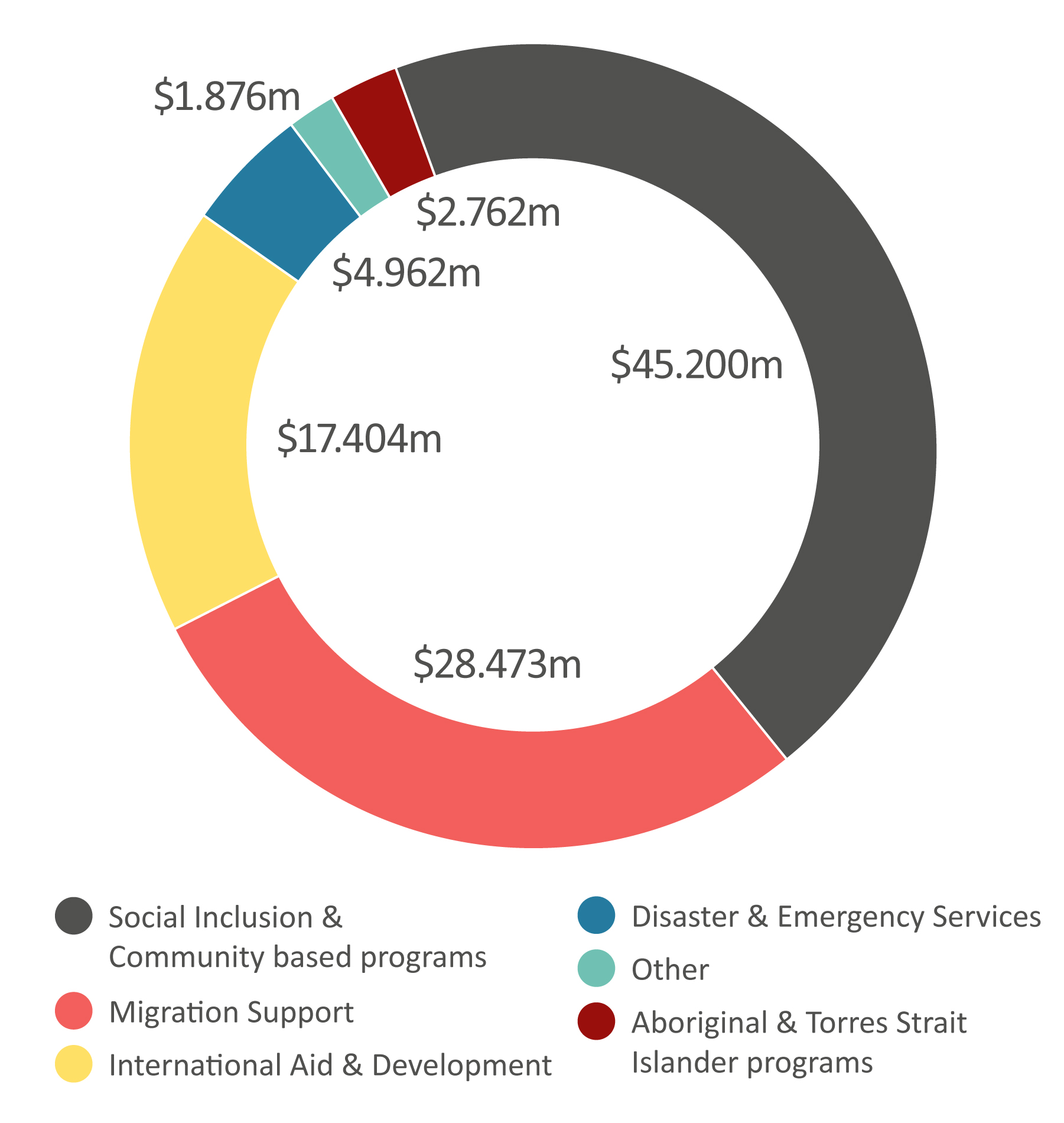
Government funding totaled $100.677M in FY2020, which included $61.065M from Commonwealth government funding, and $39.612M from State and Territory government funding. Together this accounted for 21.5% of total revenue for our humanitarian services, an increase of $15.937M compared to last year. This was largely due to the $12.263M increase in funding for our Migration Support Programs where we saw an increase of $3.230M in Humanitarian Support Program, $2.200M increase in support for people impacted with Trafficking and $1.200M increase in funding for Migrants in Transition program.
This year we also saw new challenges from the pandemic. The spread of COVID-19 was declared a public health emergency by the World Health Organization on 31 January 2020 and upgraded to a global pandemic on 11 March 2020. The rapid rise of the virus has seen an unprecedented global response by Governments, regulators and industry sectors. The Australian Federal Government enacted its emergency plan on 29 February 2020 which has seen the closure of Australian borders from 20 March, an increasing level of restrictions on corporate Australia’s ability to operate, significant volatility and instability in financial markets and the release of a number of government stimulus packages to support individuals and businesses as the Australian and global economies face significant slowdowns and uncertainties. Governments provided additional funding to support communities impacted by the COVID-19 pandemic. We received additional COVID-19 funding of $6.453M for our Migration support program.
In line with Strategy 2020, our International Programs focused on providing efficient and effective support to 14 key partner countries in the Asia Pacific region. The Department of Foreign Affairs and Trade provided $17.404M in International Aid & Development funding to support this work as well as our response to significant disasters in the region. This represents a significant increase of $9.007M compared with FY19. This is mostly due to additional support received for COVID-19 of $5.060M and $1.360M for Tropical Cyclone Harold and Ebola. Our government-funded services must meet stipulated conditions over the term of each agreement and are subject to regular review.